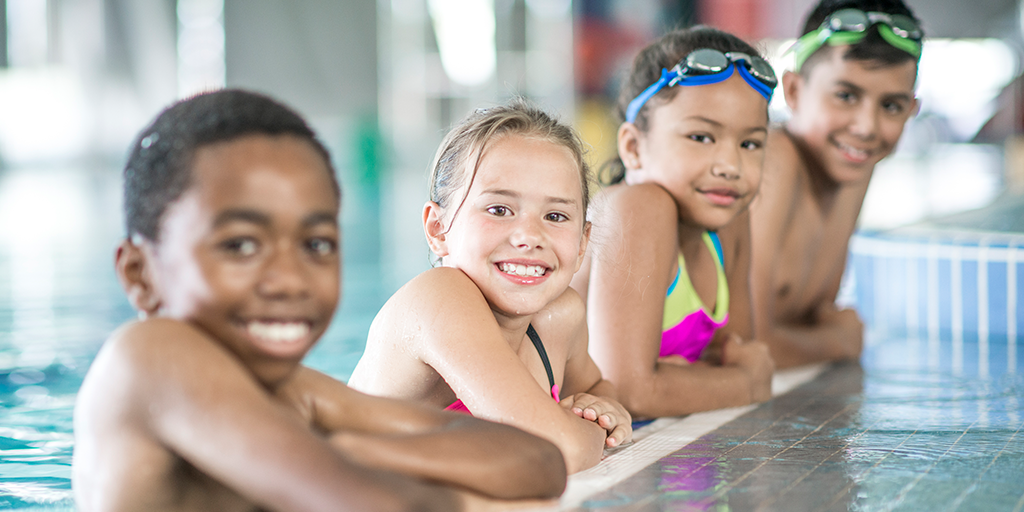Many families enjoy spending warm summer days in and around the water. But, as we’ve seen already this season, these gatherings can unfortunately take a tragic turn. Every year, more than 20 kids are rushed to the Emergency Departments at Children’s Minnesota for drowning or near drowning. Sadly, a few of them die.
But these tragedies are often preventable. In several cases, there were many people around when the child went under. This “everyone is watching so no one is watching” scenario can give people a false sense of security.
One major misconception with drownings is that it’s a noisy, splashing call for help like we’ve all seen in the movies. However, in reality, drowning is quiet and sometimes unnoticeable which is why it’s important to know what to look for while you supervise your children at the lake or pool.

Steps to prevent drowning
- Swimming lessons. Learning to swim can reduce the risk of drowning by 88% for 1- to 4-year-olds who take formal swimming lessons. Children should receive swimming lessons from a qualified instructor. Parents can start children in swimming lessons as young as 1 year old.
- Supervise. There is no substitute for supervision. Avoid distractions, especially cell phones. Looking away even for a moment is enough time for tragedy to strike. Drowning often doesn’t involve yelling, screaming and waving of the arms. Rather, it often occurs silently.
- The American Academy of Pediatrics (AAP) recommends assigning an adult “water watcher,” who should not be distracted by work or socializing who can pay constant attention to swimming children.
- Wear life jackets. Children and teens should wear life jackets whenever they are near lakes, rivers or oceans. Life jackets can prevent drowning during water activities, especially boating and swimming. Life jackets can be used in and around pools for weaker swimmers too.
- Enforce pool rules. Parent should be sure to enforce pool safety rules such as no running, pushing or horseplay when near or in water.
- Install fences. If your pool — above-ground or in-ground — is at least 18 inches deep, it must be surrounded by a fence that’s 4 feet tall. Placing four-sided isolation fences, with self–closing and self–latching gates, around backyard swimming pools, can help keep children away from the area when they aren’t supposed to be swimming.
- Learn CPR. Parents and teens should learn CPR in case of emergency. These lessons can save a life.
- Equitable access to pools. Ensuring equitable access to swimming pools and expanding swimming pool access in communities and schools that serve minoritized children can help reduce the amount of drownings.
Effects of near drowning
A child who survives a drowning can still suffer from long-term health problems.
- According to the Centers for Disease Control and Prevention (CDC), more children ages 1–4 die from drowning than any other cause of death except birth defects.
- Most kids with nonfatal drowning injuries need emergency room care. Half of them will need further care, often in a hospital.
- Surviving a drowning can leave someone with severe damage – 5-10% of childhood drowning cases result in long-term disability.
Swimming lessons around the Twin Cities
Children’s Minnesota has created a list of local organizations offering swim lessons around the Twin Cities for your family. We recommend you call or visit the organization’s website for the most current, up to date information.
- Anoka-Hennepin Community Education. Anoka-Hennepin Community Education offers swimming lessons to support youth with a wide range of skill levels. All lessons are held at Roosevelt Community Pool in Blaine and are coordinated as an authorized provider of the American Red Cross.
- YMCA. Swimming lessons and group classes for kids and adults of all levels. Families don’t have to be a member to participate.
- Minneapolis Parks & Recreation Board. Lessons are offered at area pools across the city. Scholarships are available for eligible families.
- North St. Paul School District. Trained instructors help develop water safety and swimming skills in a positive, fun, learning environment. Classes are offered in the evenings and on weekends during the school year and throughout the day in the summer.
- Minnetonka Aquatics. Programs are designed for both children and adults, of all skill levels. Scholarships available for eligible families.
Children’s Minnesota is a Level I Pediatric Trauma Center
At Children’s Minnesota, we love kids, but we would rather see them safe and at home. We understand that accidents can and do happen, which is why we are proud that our Emergency Department in Minneapolis is certified as a Level I pediatric trauma center by the American College of Surgeons. That means we’re ready to give kids the highest level of care 24 hours a day, 365 days a year.